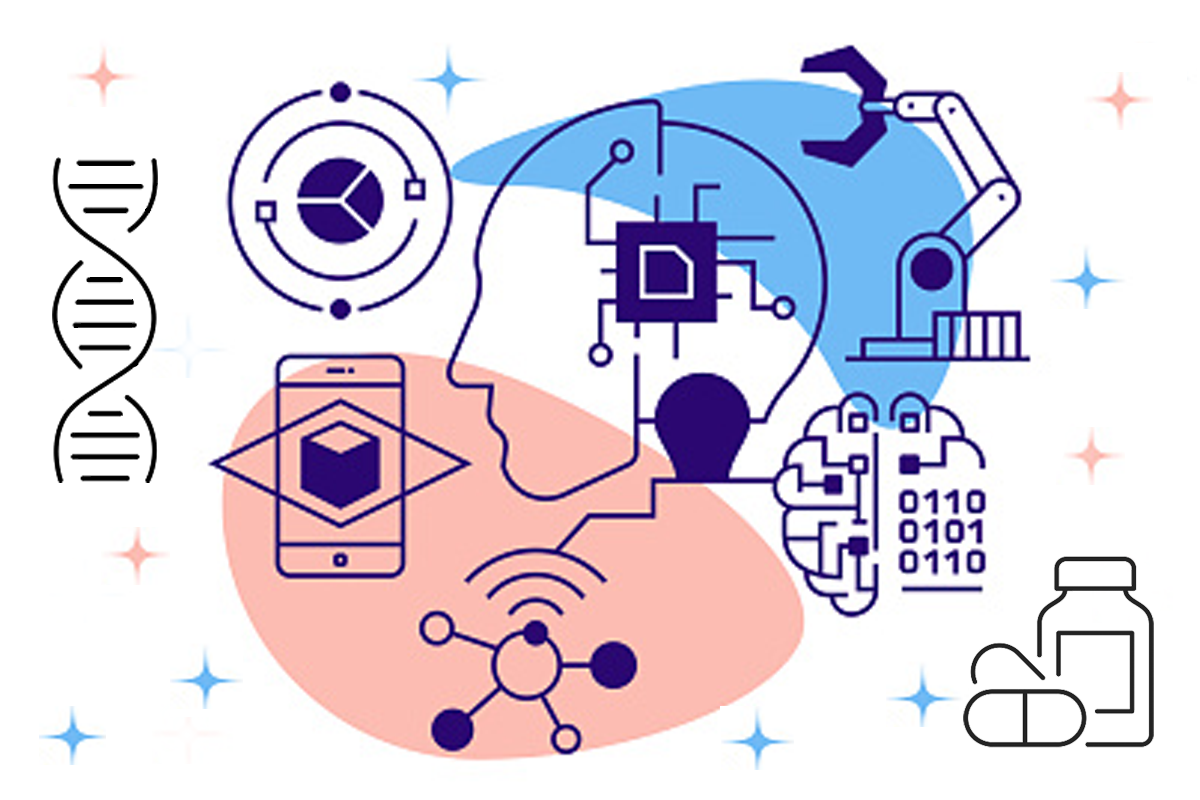

4 Ways AI Is Accelerating Care Delivery Innovation

Leaders from across the health care field met recently in Chicago at the Oliver Wyman Health Innovation Summit to explore how technology solutions and strategic reforms can lead to a more sustainable and equitable health care environment.
Predictably, artificial intelligence (AI) was a central theme in presentations and demonstrations of how AI can radically influence patient care, accelerate new drug discoveries and bridge the health equity gap.
4 Takeaways to Improve Care Delivery
1 | Digital twins demonstrate ways to deliver the right care at the right time.
One example showcased how AI can, in real time, ingest patient information and analyze it alongside evidence-based data to simulate different treatment and outcome scenarios. This use of so-called “digital twins” can improve the likelihood that patients receive the right care at the right time. With the ability to gather and analyze a wealth of patient data from various sources, digital twins can offer personalized treatment plans based on individual characteristics, medical history and real-time physiological data.
Takeaway
Predictive analytics and preventive interventions are made possible by machine learning algorithms, allowing for early detection of health risks and proactive interventions, notes a report in the journal Frontiers in Digital Health. Digital twins can optimize clinical operations by analyzing workflows and resource allocation, and support risk stratification to implement targeted patient strategies, leading to streamlined processes and enhanced patient outcomes.
2 | Genetic testing and early detection technologies can help close the health equity gap.
By leveraging advancements in genetic testing and early-detection technologies, individuals at high risk of cancer can be identified before the late stages of the disease, Feyi Ayodele, co-founder and CEO of CancerIQ Inc., explained. For example, individuals with certain genetic mutations should receive proactive measures, such as prophylactic surgeries or more frequent screenings to mitigate their risk.
Takeaway
Despite these advancements, access to these types of innovations remains uneven. Many patients, particularly those in underserved areas, lack the resources or knowledge to pursue preventive care. To combat this, Ayodele said the field must prioritize integrating genetic counseling and testing into primary care settings.
3 | Avoid a ‘sprinkler strategy’ on tech investments.
Finding ways to ensure that at-risk populations have access to resources that address health disparities is something that Niyum Gandhi, chief financial officer and treasurer of Mass General Brigham, is passionate about. He detailed how the large Boston-based health system is turning the concept of return on investment on its head. Mass General’s approach is to move away from what Gandhi called a "sprinkler strategy" of funding various initiatives to a more accountable approach that ties investments directly to health outcomes.
Takeaway
This approach requires setting clear metrics and holding leaders across the organization accountable for achieving them. Mass General is using community-based data to drive that decision-making. For instance, data showed that 57% of excess deaths in its communities are driven by cardiometabolic diseases, and cancer is also a leading cause of death. By focusing on blood pressure screenings, controlling hypertension, and cancer screenings in community settings, Mass General is closing the mortality gap among racial groups.
4 | AI is accelerating drug discoveries.
Drugmaker Pfizer is using AI and data to hasten drug discovery, manufacturing and the patient experience. AI technology, for instance, helped trim nearly six years off the time it would normally take to get a cancer drug from Phase 1 to regulatory approval. Additionally, AI-driven manufacturing processes reduced cycle times by 25%, said Lidia Fonseca, Pfizer’s chief digital and technology officer, and executive vice president.
Takeaway
Fonseca also spotlighted how AI is being used to craft personalized messaging about drugs for both patients and their clinicians. That, in turn, enables a more productive conversation about a treatment plan.



